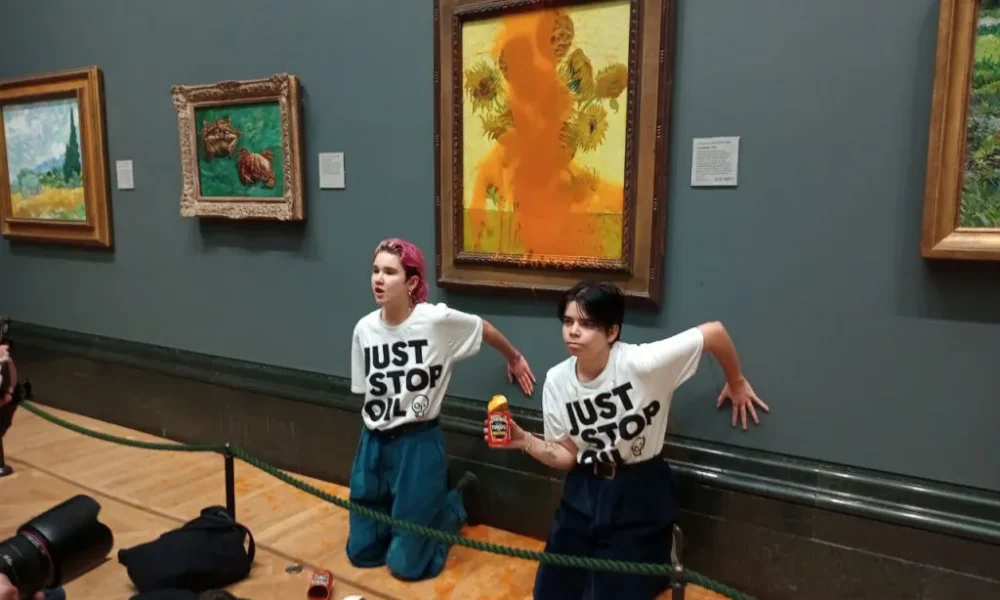On Oct. 14, British climate activism group Just Stop Oil entered the spotlight by throwing a can of tomato soup on Van Gogh’s famous Sunflowers painting at the London National Gallery. Although the glass-protected painting was unharmed, the action spurred a wave of outrage, to which the protesters systematically responded with a signature phrase: “What is worth more, art or life?”
To this I ask: Why do I have to choose? Why can’t I have both art and life? It seems obvious that we should not have to choose between the two, and that artistic creation is another powerful means for activism.
Yes, I might be critical about the means used by Just Stop Oil to spread their message, but the case for their ideas needs to be made. It is important to stress that the painting was intentionally left unharmed in order to shine light on a hypocritical contradiction within our society. As soon as people learned that activists had thrown soup on a Van Gogh painting, social media was flooded with reactions of horror. In the meantime, 10 million children in Pakistan were in urgent need of lifesaving support caused by one of the most devastating climate disasters in the country’s history—but the outcry was not nearly as loud.
This raises questions about Just Stop Oil’s actions and subsequent condemnation, as maybe they are not directly the problem. In fact, maybe the problem is the media’s reaction, insensitive to the message conveyed and only focusing on an unharmed painting. Maybe the problem is headlines such as “Climate activists throw soup at Van Gogh’s ‘Sunflowers’” and articles devoid of nuance that only portray the group’s vandalism without mentioning what they are protesting against: The hundreds of licences about to be distributed by the British government for North Sea oil and gas projects. Most people who have heard about the soup incident have never heard about the British government’s disastrous intentions, which shows the failure of modern journalism to take decisive action in the fight for the climate. It is obviously easier for journalists to feed into the scandal and the instant buzz rather than tackling the real issues at play.
However, for anyone who did not research the group’s action further, Just Stop Oil’s last strike is just provocation for the sake of provocation, which, unfortunately, only leads to further discrediting of climate activism led by young figures. For those doubtful of recent climate movements, attacking such a beloved painting reinforces their depiction of climate activism as being “performative.” The clock is ticking, and groups like Just Stop Oil do not have the time to wait for journalists to change their methods. Instead, it is time they focus on spreading their actual message, by learning how to frame issues so that they are properly covered by the media and sticking with traditional protest methods against the British government.
I am not arguing that climate activism must be clean and non-disruptive in order to be successful. Yet, I draw the line between disruption and destruction. The assault of a painting, even symbolically, is where activism loses its meaning, where it becomes nothing more than a bad publicity stunt meant to be trending on Twitter and disappear the day after. Better examples of climate activism have been seen here at McGill. Divest’s occupation of the Arts Building in March 2022 to demand the university cut their investments in fossil fuels, is a case in point. This action was the illustration of what climate activism should look like: Disruptive, thought-provoking, and pressuring the actual targets. So, I say, take to the streets, block the cars, scream as loud as you need so that people hear you. But—please don’t take my art, for oil and soup don’t mix.









